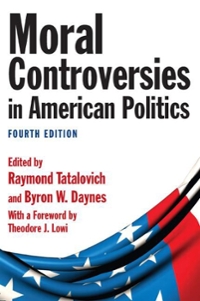,find attached and solve.
Consider the following standard Homer Model and a variation that includes human capital. Goods Production Flmction Ideas Production Function Human Capital Production Function Resource Constraint Allocation of Labour Human Capital Y. = as... 15AM] : EAthLGJ H: 2 L511; Lyt+La3g +LM = L La; : TE Assume parameters take the following values in each specication. Standard Human lCapital E 1000 1000 Ly; 750 700 LG; 250 200 La; r 100 :2 0.0005 0.0005 A5 10 1 l] 1. Explain what using labour to produce human capital implies for the economy? 2. Solve for the balanced growth path of output per capita in both models, showing all working. 3. Does the inclusion of human capital increase the rate of growth compared to the standard model? What is the impact on output in the short and long run? 2. Consider the set of lotteries (Pr: Py; p=) on the set of outcomes {r, y, z} where Pr, Py; and p, are the probabilities of r, y, and z, respectively. (a) For each (partial) preference below, determine whether it is consistent with ex- pected utility maximization. (If yes, find a utility function; if so, show that it cannot come from an expected utility maximizer.) 1. (0, 1, 0) > (1/8, 6/8, 1/8) and (7/8, 0, 1/8) > (6/8, 1/8, 1/8) 2. (1/4, 1/4, 1/2) > (3/4, 0, 1/4) > (5/6, 1/6, 0) > (1/2, 1/3, 1/6) (b) For each family of indifference curves below, determine whether it is consistent with expected utility maximization. (If yes, find a utility function; if so, show that it cannot come from an expected utility maximizer.) 1. py = c - 2pr (where c varies) 2. Py = c(pr + 1) (where c varies) 3. Py = c - 2vp, (where c varies) (c) Find a complete and transitive preference relation on the above lotteries that sat- isfies the independence axiom but cannot have an expected utility representation. 3. Under the assumptions P1-P5, prove or disprove the following statements. (a) If All Bi, Azz B2, and Aj n A, = 0, then Aj U Azz B, U B2. (b) For any given event D, define "_ given D" by A> B given Diff An DEBAD. The relation > given D is a qualitative probability. (c) For any two partitions (A1. . .., A,) and (B1, .... B.) of S with A ... ~ An and B1~ . .. ~ Bn, we must have A| ~ B1.1. (For Grade) There are finitely many states s 0. Derive the demand of the decision maker for these securities as a function of the price vector p = (Ps) SES . 2. Ann is an expected utility maximizer, but she does not know her preferences, which she can learn by costly contemplation. To model this situation, take S = [0, 1], and let Z C R be a finite set of consequences with at leat two elements. Assume that Ann's von Neumann utility function is ZZA z = (2)n and her belief on S is represented by uniform distribution. For any n and some fixed c > 0, by spending en utils, Ann can obtain a partition Pn = {[0, 1/2"], (1/2", 2/2") , .... (k/2" , (k + 1) /2") ,..., [(2" - 1) /2", 1]} and observe the cell In (s) , g if Ann may end up choosing f when the true state happens to be s. Check which of the postulates P1-P5 of Savage is satisfied by _, for any fixed s. 3. Under the assumptions P1-P5, prove or disprove the following statements. (a) For any partition A1, ..., An of S, and for any acts f, ge F, If > g given Ax for all Ax] = f _ g. (b) If All Bi, Azz B2, and Aj n Az = 0, then A, U A,_ B, UBz. (c) For any given event D, define "_ given D" by A> B given D iff An DEBn D. The relation > given D is a qualitative probability









